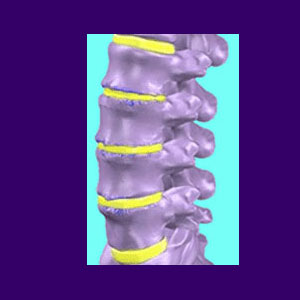
Facet joint arthritis is usually part of an overall spinal degeneration process that will also include disc desiccation and general degenerative joint disease. This means that the cause of facet syndrome is usually a more widespread condition affecting the entire vertebral column. That being said, it is crucial to comprehend that facet joint syndrome is a normal part of the aging process and is not normally symptomatic in the vast majority of affected individuals. This is a fact proven in clinical research, yet it does not stop these completely expected anatomical changes from being positively diagnosed as symptom generators in a great number of people.
This narrative explores arthritic process that affect the spinal zygapophyseal joint structures, including the changes that are caused to the joints and the usual symptoms of facet syndrome.
Causes of Facet Joint Arthritis
The following are processes which may cause or contribute to the formation of location-specific structural changes inside the spinal facet joints:
Arthritis in the spine is the chief process leading to facet deterioration. Spinal osteoarthritis is also a normal part of the aging process for most people. Everyone will have some degree of osteoarthritis and facet joint degeneration as they get older. Only a small percentage will suffer significant pain from these conditions.
Bones spurs can build up around the facet joints and can cause some pain or symptoms. Occasionally, they can also cause pinched nerves or enact symptoms of sciatica.
Degenerative disc disease can also contribute to the development of facet syndrome. As the discs thin out and lose height, the vertebral bones become closer to one another. This increases the friction between the bones. This wear and tear is normal. Most of the time, DDD is not painful either, but when it becomes severe, may cause extreme degeneration which may be symptomatic.
Overuse of the spine might facilitate facet joint disease. How do you overuse your spine? It is thought that gymnasts, acrobats and certain athletes are more susceptible to facet syndrome, due to additional wear and tear on their vertebrae. Another theory states that they suffer the same degeneration as the rest of us, just at an earlier age.
Facet Arthritis Truths
Facet joint degeneration is caused by living normally. If you want to prevent it, you have to stop living… Not a great solution. A better answer is to accept the changes that occur in your body as it ages. Do not obsess over the pain and make it worse. Facet joint changes are typically nothing to fear. If you can embrace this thought, you might have already found your cure.
For patients with abnormally severe facet joint problems, such as large bone spurring or significant injury to the joints themselves, there may be a need for professional treatment. In these circumstances, facet joint surgery might actually be the best path towards lasting relief, since conservative care methods are unlikely to do anything to resolve the structural issues. Most facet joint procedures are minor and effective when the diagnosis is correct. In order to be sure that an operation may be indicated for your specific circumstances, it is advised to get a few opinions on the cause of pain and the discuss treatment options with a number of different types of doctors.




